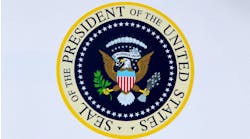Avery Dennison Corp. is charging 3M Corp. and subsidiary 3M Innovative Properties Co. with unlawful monopolization and unfair competition in two markets for retroreflective sheeting, a technology used to enhance the nighttime visibility of road signs and other highway and transportation products.
3M has market share of nearly 100% in one of the two markets and at least 70% in the other.
Nine separate counts, including violations of the Sherman Act, the Lanham Act, the Cartwright Act, and several other California state laws, as well as claims of fraud and false advertising, are contained in the complaint, which was filed on Oct. 22 in the United States District Court for the Central District of California. Avery Dennison is seeking both monetary damages and an injunction against 3M.
According to the complaint, 3M has attempted to increase its monopoly power by unlawfully seeking to prevent Avery Dennison from offering its new OmniCube product, which meets the most recent standard for high-performance retroreflective sheeting defined by standards organization ASTM International. This standard, called Type XI, is used by governments to qualify products in open bidding for highway signage contracts.
According to the complaint, 3M induced ASTM International to declare Type XI as a new standard, at a time when 3M had the only Type XI product on the market, by promising to withdraw certain patent claims. However, when Avery Dennison introduced OmniCube, its Type XI product, 3M sued Avery Dennison for patent infringement despite its representations to the ASTM that it would not pursue patents covering the standard (3M has even sought a preliminary injunction to block sales of OmniCube without a full trial on the merits of its patent suit).
The complaint further notes that if Avery Dennison is precluded from selling OmniCube, then 3M will be the only source of Type XI sheeting. Sole-source materials may not be purchased with Federal funds such as those available under the American Recovery and Reinvestments Act, 3M's actions may slow the adoption of Type XI sheeting and the delivery of its improvements in safety to American highways.



